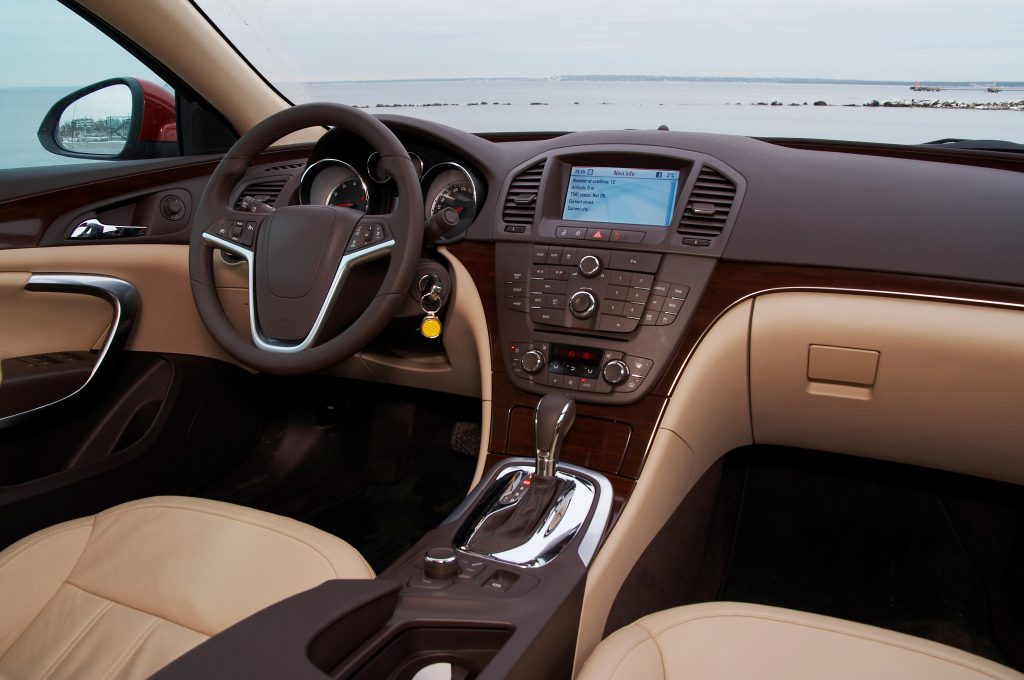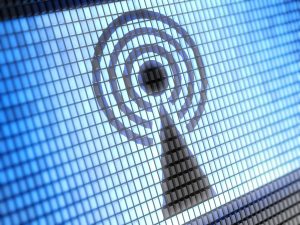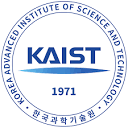Dr Jeong-Wook Kim | Car Talk: Active Phased Array Antenna System Design for Vehicle-to-Everything Communication
Information exchange between vehicles and the world around them offers many exciting possibilities. Drivers could be provided with real-time information on the speed and behaviour of other cars around them, live updates from city infrastructure to vehicles could improve traffic flow, and vehicle-to-mobile communication interfaces could warn pedestrians of busy crossings. However, such advances require a strong and stable signal to ensure reliable and effective communication. Dr Jeong-Wook Kim from the Korea Advanced Institute of Science and Technology has developed a new design for vehicle communication antennas, improving the ability of individual vehicles to exchange information with the world around them.
Communication and Connectivity
The design of modern vehicles inherently requires the potential for communication with the world. Perhaps the most obvious example is that of communication between the vehicle and the driver, and so we have the dashboard conveying information about speed, fuel level and potential technical issues. Between vehicles, however, the only options currently available are flashing headlights and sounding the horn.
As communication technology improves, researchers and engineers are keen to develop stable ways in which vehicles can exchange more information with the world around them. This information exchange could update drivers on situations they are yet to encounter or aspects of a situation they are unable to see. The potential benefits of this inter-vehicle communication are far-reaching. Communication between vehicles could warn road users of sudden changes in another vehicle’s speed or direction potentially concealed in a driver’s blind spot, or the approach of emergency vehicles.
Whilst our existing satnav systems can update traffic conditions and suggest alternative routes – thus providing some of this functionality, greater information exchange between vehicles would increase their accuracy and provide immediate real-time updates. Vehicles could also communicate with static devices incorporated into city infrastructures. Communication between road users and these infrastructure-based devices could be used by traffic controllers to reduce congestion and improve the flow of traffic around the city.

This concept of a vehicle that communicates information not only with the driver but also with other connected devices around it is called vehicle-to-everything communication. Vehicle-to-everything is a similar idea to the Internet of things, whereby Internet-connected devices gather information from and update each other. An example of this would be a household heating system being controlled from your mobile device.
The major difference between vehicle-to-everything and the Internet of things is that communication between vehicles is made difficult by the speeds involved. Many of the component parts of the network are moving relative to each other, and the internet connection is not always reliable or accessible. Therefore, for vehicle-to-everything communication to work effectively, vehicles must be equipped with a form of emitter and receiver system. This antenna system must be able to send signals out from the moving vehicle it is mounted on, whilst also receiving signals from a myriad of other sources which may also be moving.
For an effective vehicle-to-everything system, the antenna must be mounted on a vehicle without affecting its overall design and efficiency, and also reliably exchange information with other devices in the vicinity. To meet this challenge, Dr Jeong-Wook Kim from the Korea Institute of Science and Technology has developed an antenna array specifically to meet the requirements of vehicle-to-everything communication.

What Makes a Good Vehicle-to-Everything Antenna?
There are three major considerations that Dr Kim had to satisfy in his mission to construct a viable vehicle-to-everything antenna system. First, the physical size and shape of the antenna needed to be suitable for mounting on a vehicle. A large TV-style antenna might be great at receiving and sending signals but is unsuitable for mounting on a vehicle. If the antenna protrudes too much from the surface of the vehicle it will decrease the aerodynamic profile, reducing fuel efficiency and running the risk of breakage under high-speed situations. Dr Kim saw that his antenna would need to have a low profile to reduce the impact on the vehicle’s aerodynamics, and given that the antenna will have to operate from the power supply of the vehicle, he had to ensure it would not be overly power-hungry.
The second aspect Dr Kim had to consider was the scanning angle of the antenna. The scanning angle is the angle from which an antenna can pick up incoming signals. In the case of vehicle-to-everything antenna systems, we want as large a scanning angle as possible, as signals could be coming from any position around the vehicle, whilst also moving around relative to the vehicle. By having a large scanning angle, the vehicle can detect more incoming signals and can transmit its own information to more receivers.
This scanning angle is dependent on the half-power beam width (HPBW) of the antenna. The HPBW is the angular width of the major lobe of an antenna radiation pattern where the signal power is half its maximum value or -3 dB from the peak of the main beam. If we have a beam of radio waves from a transmitter, we measure how the signal changes as we move perpendicularly across the beam. The highest power will be directly in line with the source of the beam, and the power will decrease towards the edges of the beam. The larger the HPBW, the larger the antenna scanning angle, and so for vehicle-to-everything communication, the HPBW needs to be as large as possible.
The final aspect of antenna design that Dr Kim needed to consider was ‘gain’. The gain of an antenna is the ratio of the radiation intensity in a given direction from the antenna to the radiation intensity averaged over all directions. As the gain of the antenna increases, system performance is improved. For Dr Kim’s antenna, system performance was defined as how well it turns the information in the form of an electrical signal from the vehicle into an electromagnetic wave to be sent out to other devices in the area, and how well it transforms the incoming electromagnetic wave into an electrical signal to be turned into useable information for the driver. With a high-gain antenna, a vehicle-to-everything system can send and receive signals more efficiently and communicate more effectively with the other devices around it.

System Design
To create an antenna that lies flush with the surface of the vehicle, Dr Kim began by looking into a one-side shorted patch antenna. These have a very low profile and could easily be mounted to the roof of a vehicle without affecting the aerodynamics. However, the existing square design of the one-side shorted patch antennas means that they have limited scanning range and gain, which makes them unsuitable for vehicle-to-everything systems.
The reason for the limited gain and scanning angle associated with one-side shorted patch antennas lies in their geometry. The antennas have three sides that generate magnetic currents, and the fourth side acts as a ground. The problem in the square designs lies in that the magnetic currents from the sides adjacent to the ground act at odds with one another, serving to reduce the performance of the design. Despite the inclusion of electrical ‘walls’ designed to reduce the impact of these currents, the square designs still suffer from reduced gain.
To create an antenna with fewer detrimental magnetic currents, Dr Kim turned to more circular designs. By using a semi-circle design, Dr Kim found he could design the magnetic currents in the antenna for high gain performance. The magnetic current is generated across the flat edge of the antenna and with the curved edge of the semi-circle being ground. Dr Kim calls this design an ‘arc-shorted half elliptic element’. Dr Kim tested several curved designs ranging from a semi-circle to a flatter semi-ellipse. In testing, he found that the curved designs all had a higher frequency bandwidth than the square designs and that the gain improved as the length of the ellipse was increased.
Rather than having one large semi-ellipse antenna mounted to the vehicle, Dr Kim incorporated many smaller individual antenna elements into an antenna array (also known as a phased array). By having an array of smaller individual antennas, Dr Kim’s novel design is much more powerful than a single large element. There are numerous benefits to having an antenna array over a single antenna. These benefits include an increase in overall gain and sensitivity to incoming signals, a decrease in the amount of interference and noise on the received signal, and the ability to better determine the angle an incoming signal is coming from.
This improvement is clearly shown in Dr Kim’s data. A single antenna element of Dr Kim’s semi-ellipse design gives a 162° scanning angle – but when many of these elements are combined into an array the scanning angle increases to 180°. By mounting several of these antenna arrays it would be relatively easy to gain full 360° coverage around the vehicle. As such, Dr Kim’s final design for the antenna array incorporates 16 semi-ellipse antenna elements.

Car Networking
Dr Kim’s antenna array design is a huge leap forward in achieving a working vehicle-to-everything ecosystem of vehicles. The semi-ellipse design means that Dr Kim improves gain and scanning angle while maintaining the aerodynamic profile. Using Dr Kim’s antenna array design, it is very likely that we will see vehicle-to-everything capable vehicles on the roads very soon.
SHARE
DOWNLOAD E-BOOK
REFERENCE
https://doi.org/10.33548/SCIENTIA890
MEET THE RESEARCHER

Dr Jeong-Wook Kim
Korea Advanced Institute of Science and Technology (KAIST)
Daejeon
South Korea
Dr Jeong-Wook Kim received his BS degree in Electronics Engineering from Pusan National University (PNU), Busan, South Korea, in 2018, and MS and PhD degrees in Electrical Engineering from the Korea Advanced Institute of Science and Technology (KAIST) in 2020 and 2023, respectively. His current research interests include wireless power charging systems and adaptive current control algorithms, phased array antenna systems and beam shaping algorithms, transparent conductive material and invisible antenna design, vehicle antenna design, RADAR systems and signal processing, and EMI Shielding graphene design.
CONTACT
FURTHER READING
J-W Kim, S Kim, H Cho, et al., Wide-angle scanning phased-array system using arc-shorted half elliptic elements, Journal of Electromagnetic Waves and Applications, 2021, 36(2), 261–271. DOI: https://doi.org/10.1080/09205071.2021.1962739

REPUBLISH OUR ARTICLES
We encourage all formats of sharing and republishing of our articles. Whether you want to host on your website, publication or blog, we welcome this. Find out more
Creative Commons Licence (CC BY 4.0)
This work is licensed under a Creative Commons Attribution 4.0 International License. 
What does this mean?
Share: You can copy and redistribute the material in any medium or format
Adapt: You can change, and build upon the material for any purpose, even commercially.
Credit: You must give appropriate credit, provide a link to the license, and indicate if changes were made.
SUBSCRIBE NOW
Follow Us
MORE ARTICLES YOU MAY LIKE
Professor Giorgio Buttazzo | Artificial Intelligence and a Crossroads for Humanity
Where do we stand with artificial intelligence? Might machines take over our jobs? Can machines become conscious? Might we be harmed by robots? What is the future of humanity? Professor Giorgio Buttazzo of Scuola Superiore Sant’Anna is an expert in artificial intelligence and neural networks. In a recent publication, he provides considered insights into some of the most pressing questions surrounding artificial intelligence and humanity.
Professor Martin Trefzer | Bridging Nature and Artificial Intelligence for Smart Electronics Technology
The ever-developing world of artificial intelligence (AI) stands at the tip of a transformative breakthrough. Professor Martin Trefzer from the University of York and Professor Jim Harkin from Ulster University have introduced a revolutionary approach to neural network design. They work on an electronic system based on AI that forms the basis of the cross-disciplinary project called Nervous Systems, which aims to build electronic neuromorphic devices with an artificial intelligence system mirroring the adaptability and responsiveness of biological neural systems.
Dr Jon Tore Lieng | Dynamically Installed Anchors for Floating Offshore Turbines
Effectively harnessing offshore wind presents a valuable opportunity to increase energy supplies. Floating wind turbines present several advantages over traditional fixed turbines in more shallow waters. Dr Jon Tore Lieng from Deep Sea Anchors and colleagues have developed a type of dynamically installed anchor to hold the structures in place while reducing both the costs and complexity associated with installation where cohesive seabed sediments are realised.
Dr Sébastien Weber | PyMoDAQ: Navigating the Future of Data Acquisition
In an era where data is paramount, Dr Sébastien Weber and his team at CNRS, the French National Centre for Scientific Research, are changing the landscape for scientists and engineers with PyMoDAQ, an open-source data acquisition software. Their revolutionary tool stands out for its accessibility, versatility, and the thriving community it fosters.





